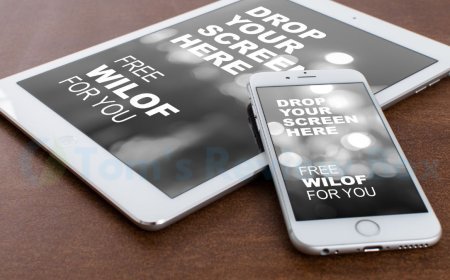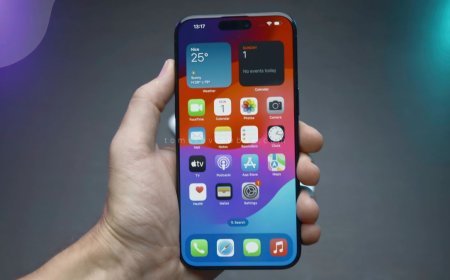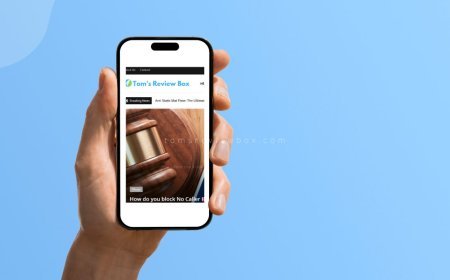Why Doesn't iPhone Ring? Troubleshooting Common Issues
Discover the reasons why your iPhone doesn't ring and learn how to troubleshoot common issues. Get solutions to fix the problem and ensure you never miss an important call again.

Did you know that a common issue iPhone users face is their device not ringing for incoming calls, tap ringtone, voicemails, silence unknown callers page, and iOS update? If you've ever wondered why your iPhone remains silent when someone is trying to reach you or if you've missed several calls, you're not alone. This puzzling situation can be frustrating, especially in crucial moments when every call matters. In this post, we delve into the reasons behind this perplexing problem, shedding light on why your iPhone may choose to stay silent instead of alerting you with its ringtone.
Stay tuned as we uncover the mysteries behind why your iPhone doesn't ring and explore possible solutions to ensure you never miss an important call again.
Key Takeaways
-
Check Basic Settings: Ensure that your iPhone's volume is turned up, the Ring/Silent switch is not on silent mode, and the Do Not Disturb mode is disabled to allow incoming calls to ring.
-
Explore Sound and Notification Settings: Adjust the ringtone volume, check if vibration settings are enabled, and customize notification sounds to ensure you don't miss incoming calls.
-
Verify Connectivity: Make sure your iPhone has a stable network connection and Bluetooth is not interfering with ringing notifications.
-
Manage Calls and Contacts: Ensure that contacts are not blocked, and check call forwarding settings to prevent calls from going straight to voicemail.
-
Troubleshoot with Resets and Updates: If the issue persists, try restarting your iPhone, resetting all settings, or updating your device's software to fix any underlying software glitches.
-
Seek Further Help: If the problem continues, consider reaching out to Apple Support or visiting an authorized service provider for professional assistance.
Understanding Common Causes
Impact of iOS Updates
iOS updates can significantly affect the ringing functionality of iPhones when a call is set. With each update, there is a potential for software glitches that may interfere with the phone's ability to ring properly. Users often notice that after updating their device, they experience inconsistencies in receiving incoming calls. This issue is particularly frustrating as it can lead to missed calls and communication breakdowns.
User-Reported Ringing Patterns
Users have reported varied patterns when it comes to their iPhone not ringing. Some users mention that their phone only rings when it is on silent mode, while others experience the opposite - no ringing when the phone is on silent. This inconsistency in ringing behavior adds to the confusion and frustration among iPhone users. It is essential to understand these patterns to troubleshoot and address the ringing problem effectively.
Speaker Functionality Relationship
The functionality of the speaker on an iPhone is closely related to ringing problems. If the speaker is not working correctly, it can directly impact the phone's ability to produce sound, including ringing tones and call. Issues such as speaker distortion, low volume, or complete speaker failure can result in the phone not ringing when calls come in. Checking the speaker's functionality is crucial in diagnosing and resolving ringing issues on iPhones.
Checking Basic Settings
Verify Mute Switch Status
To ensure your iPhone rings, first, check the status of the mute switch. This physical switch on the side of your device can inadvertently silence all incoming calls and notifications. Slide the phone to make sure it's not set to silent mode.
Adjust Volume Settings
Next, confirm that your volume settings are appropriately configured for ringing. Sometimes, a simple adjustment in the volume level can resolve the issue of your iPhone not ringing when receiving calls or messages.
Silence Unknown Callers Setting
Another setting to consider is the Silence Unknown Callers option. When enabled, this feature silences calls from numbers not recognized in your contacts, potentially causing your iPhone not to ring for certain calls. Check this setting on your phone to see if it's affecting your device's ringing behavior.
Exploring Sound and Notification Settings
Incoming Call Notification Options
If your iPhone doesn't ring, check the incoming call notification options. Ensure that the ringtone volume is not muted or too low.
When an iOS 17.3 update is installed, it might alter the notification settings without your knowledge. This can lead to your phone not ringing for incoming calls.
Call Notification
To address the issue of your iPhone not ringing for incoming calls, navigate to Settings > Sounds & Haptics. Check the ringer volume and adjust it as needed.
Despite having the correct settings, some users face issues with their alarms not sounding on time. This can be due to software glitches or conflicts.
Importance of Ringtone Assignment
Assigning a specific ringtone to different contacts can aid in identifying important calls without looking at your phone. This customization can help in resolving ringing issues effectively.
If you are still facing problems with your iPhone not ringing, consider setting a new ringtone or restoring the default standard ringtone.
-
Pros:
-
Customizing ringtones can enhance user experience.
-
Assigning unique ringtones to contacts improves call identification.
-
-
Cons:
-
Complicated notification settings may confuse some users.
-
Software updates can sometimes disrupt sound settings.
-
Sound and Ringtone Adjustments
To ensure your iPhone rings properly, tap on a ringtone in the settings and adjust the ring volume by dragging the slider.
If you have recently purchased a new iPhone, familiarize yourself with the sound settings and customize them according to your preferences.
Remember, if you encounter issues with your iPhone speakers, exploring different sound settings and adjusting them accordingly can often resolve the problem.
Addressing Do Not Disturb and Focus Modes
Manage Do Not Disturb
When encountering issues with your iPhone not ringing, checking the Do Not Disturb settings is crucial. By ensuring that this feature is turned off, you can allow calls to come through without any hindrance. Access the Do Not Disturb settings by going to Settings > Do Not Disturb. Here, you can adjust the settings to enable calls even when the feature is active.
Impact of Focus Settings
The Focus mode on iPhones can also impact the phone's ability to ring. When a specific focus mode is activated, it can silence notifications and calls, resulting in your phone not ringing when someone tries to reach you. To address this, navigate to Settings > Focus and review the settings for each mode to ensure that incoming calls are not being blocked.
Understanding Call Forwarding Status
Another factor that may contribute to your iPhone not ringing is the Call Forwarding status. If this feature is enabled and set to divert calls to another number, your phone may not ring as expected. To check and modify Call Forwarding settings, go to Settings > Phone > Call Forwarding. Ensure that this feature is disabled if you want your phone to ring normally for incoming calls.
Verifying Connectivity and Bluetooth Issues
Checking Network Connection
When your iPhone doesn't ring, start by verifying the network connection. Poor network coverage or signal issues can prevent incoming calls. Ensure your device is connected to a stable network to receive calls without interruptions.
Troubleshooting Device Settings
Investigate the device settings on your iOS device to ensure they are configured correctly. Check the volume settings, ringtone selection, and any time-related settings that might be affecting the phone's ability to ring. Make sure "Do Not Disturb" mode is disabled to allow incoming calls.
Examining Bluetooth Connectivity
If you use Bluetooth devices with your iPhone, Bluetooth connectivity issues could be causing the phone not to ring. Disconnect any connected Bluetooth devices and test if the phone rings normally. Sometimes, interference or pairing problems with Bluetooth accessories or phone can impact call notifications.
Understanding Missed Call Consequences
Connectivity issues can lead to missed calls, which may result in important messages going unnoticed. When your iPhone fails to ring due to network or Bluetooth problems, you risk missing out on crucial communications. It's essential to address these issues promptly to stay connected.
Managing Calls and Contacts
Auto-Answer Calls
When checking why your iPhone doesn't ring, review the Auto-Answer Calls setting. This feature automatically picks up calls after a certain number of seconds, potentially affecting the phone's ringing behavior. By adjusting this setting, you can ensure that incoming calls actually ring on your device.
Communication Limits
Understanding the significance of Communication Limits is crucial in resolving ringing issues. By setting communication limits, you can control who can contact you during specific times, preventing unwanted disturbances. Ensure these limits are not inadvertently blocking important calls from coming through.
Contact Management
Managing your contacts plays a vital role in ensuring your phone rings for all incoming calls. Check for any contacts that might have been mistakenly blocked or marked as spam, causing their calls to be silenced. Regularly review and update your contact list to avoid missing important calls.
Troubleshooting with Resets and Updates
Restarting the Device
When your iPhone experiences ringing problems, a simple troubleshooting step is to restart it. This action can help resolve minor glitches that may be causing the issue. By restarting your device, you give it a fresh start and allow the system to recalibrate, potentially fixing any software hiccups affecting the ringtone.
Replacing the SIM Card
If restarting the phone does not solve the problem, another solution to consider is replacing the SIM card. A faulty or damaged SIM card can lead to connectivity issues, including problems with receiving calls and notifications. By replacing the SIM card, you ensure that your device can establish a stable connection with the network, enabling it to ring properly.
Updating to iOS 17.3
One crucial step in addressing ringing issues on your iPhone is updating to iOS 17.3. Software updates often include bug fixes and improvements that can enhance the overall performance of your device. In this case, updating to iOS 17.3 can specifically target and resolve any underlying software issues that may be preventing your phone from ringing correctly.
Seeking Further Help
Share Experiences
Encourage users to share their experiences with troubleshooting ringing problems by engaging with the previous section's tips. Sharing experiences can provide valuable insights and potential solutions from a diverse range of perspectives.
Seek input from friends, family, or online communities to gather a variety of troubleshooting methods that have been successful for others. Collaborating and sharing experiences can lead to discovering new approaches to resolve the iPhone ringing issue.
Professional Assistance
If the troubleshooting steps mentioned in the previous section do not resolve the ringing problem, it may be time to seek professional assistance. Contacting Apple Support or visiting an authorized service provider can offer in-depth diagnostics and solutions tailored to your specific issue.
Professional technicians have the expertise and tools necessary to diagnose complex iPhone issues that may require specialized attention. Seeking professional help ensures that the problem is addressed effectively and efficiently, minimizing any further disruptions in receiving future calls or alarms.
Summary
You've now explored various reasons why your iPhone might not be ringing and learned how to troubleshoot these issues effectively. By understanding common causes, checking settings, and exploring sound options, you're on your way to resolving the problem. Make sure to address Do Not Disturb settings, connectivity issues, and call management for a comprehensive approach. Remember to seek further help if needed, as sometimes a professional's assistance can save you time and frustration. Stay proactive in managing your device for seamless functionality and uninterrupted communication.
Frequently Asked Questions
Why is my iPhone not ringing when receiving calls?
If your iPhone is not ringing when receiving calls, it could be due to common causes such as the device being on silent mode, low volume settings, or Do Not Disturb mode activated. Check these settings first to troubleshoot the issue.
How can I check the basic settings on my iPhone to ensure it rings?
To check basic settings on your iPhone for ringing, go to "Settings" > "Sounds & Haptics." Ensure that the "Ringer and Alerts" volume is turned up. Also, check if the "Silent Mode" switch on the side of your device is not activated.
What should I do if my iPhone is not ringing despite having sound and notification settings in place?
If your iPhone is still not ringing despite correct sound and notification settings, explore the "Do Not Disturb" and "Focus" modes. Disable these modes if they are active as they can silence incoming calls and notifications.
How can connectivity and Bluetooth issues affect my iPhone's ringtone?
Connectivity and Bluetooth issues can impact your iPhone's ringtone by causing disruptions in signal reception. Ensure that your device has a stable network connection and Bluetooth is turned off when troubleshooting ringtone problems.
Why should I consider resetting or updating my iPhone to fix ringtone issues?
Performing resets and updates on your iPhone can resolve software glitches that may be affecting the ringtone functionality. Resetting network settings or updating to the latest iOS version can often address any underlying issues causing the phone not to ring.
When should I seek further help if my iPhone still doesn't ring after troubleshooting steps?
If you have tried all troubleshooting steps and your iPhone still does not ring, it's advisable to seek further help from Apple Support or visit an authorized service provider. They can diagnose any hardware-related problems that may be causing the issue.
What's Your Reaction?







































![MacBook Pro M5: All the features and specs you need to know [LEAKS REVEALED]](https://tomsreviewbox.com/uploads/images/202502/image_430x256_67bd6d7cd7562.jpg)




























